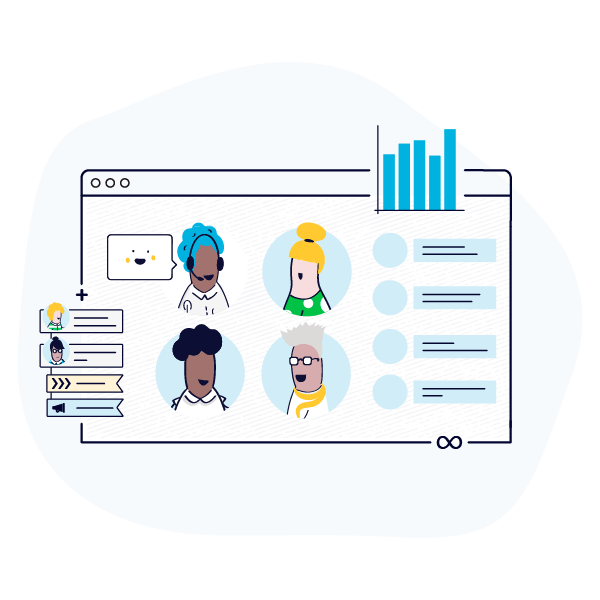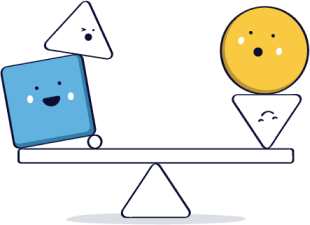
When your company invests in new software or equipment, you want to be sure that it functions as it should and brings value over time.
The same is true for your customer relationship management platform (CRM). CRMs are systems for managing customer data and strengthening relationships with leads to close more deals. A CRM is essential for making more sales and improving customer relationships.
Once you’ve completed your initial CRM implementation, you’ve checked a crucial task off your CRM setup checklist. While the initial implementation is the heaviest lift in the process, to make the most of your CRM system, you’ll want to continue monitoring and improving your usage of it over time.
With CRM, “set it and forget it” isn’t the best approach. Why? Several issues could arise that lead to less-than-optimal usage of your CRM, from poor training on the system to low user adoption to a lack of essential features. In business, nothing stays the same for long and you may see changes in:
To adjust to these kinds of changes, you’ll need to monitor your CRM system so that you’re aware of them and then take steps, if necessary, to improve the system and help you make the most out of the platform to boost your company’s performance.
Reviewing and optimizing your CRM may look different as your company grows and your needs change. The best way to stay informed about how your CRM is helping your team is to routinely compare how the system is performing with your company’s goals.
So, how do you monitor and improve your CRM system? Here’s what you need to know.
Measuring the success of your CRM implementation tells you what works well and what areas could use improvement, so it’s essential for making the most of your CRM system.
It’s important to measure the success of your initial implementation once it’s complete. It’s also a good idea to evaluate the long-term success of your CRM strategy regularly.
How do you measure CRM implementation success?
Refer back to your CRM implementation plan to help measure success. What key performance indicators (KPIs) did you identify for your CRM system? Which metrics are you aiming to improve with your CRM?
Here are a few important metrics to monitor regarding your CRM’s performance:
If your CRM implementation is successful, you should see improvement in performance metrics you’ve targeted, such as:
Another essential part of measuring CRM implementation success is gathering feedback from your team. Request feedback from your team and ask questions such as whether they:
Based on this user feedback, you can make adjustments such as updating your workflows, providing additional training, or adding integrations.
Once you’ve monitored your CRM’s performance over a set period, such as a quarter, you have the data you need to identify potential areas for improvement. Looking for those opportunities is critical because it paves the way for you to optimize your CRM system and use its features and tools best.
To identify areas of improvement for your CRM, put a team member in charge of gathering your CRM’s performance metrics and synthesizing the information to identify growth opportunities. The right CRM makes it easy to gather that data through reports. You can then evaluate the results to generate solutions.
Some examples of areas where you could improve your CRM usage are:
Explore our free guide here.

To keep your CRM system performing at its best, you’ll want to update and optimize it continuously. This will help you get the most value possible from your CRM.
After identifying areas for improvement, your team can take the necessary steps to optimize your use of the CRM system. Some adjustments may need to be made at the level of your team and CRM users, while others might involve a system-wide modification.
While your business doesn’t have ultimate control over the system’s user interface, functionalities, and other settings, you should always see your CRM’s customer support team as a valuable resource for working through any issues you encounter. Whether it’s surfacing a system glitch or identifying how to best use your CRM’s tools, the support team should be there to help your business optimize the CRM.
Follow these steps to make your CRM the best it can be:
It’s also helpful to monitor new features offered by your CRM, as these additional capabilities can help you optimize your system in new ways.
Once you’ve identified areas for improvement, take action to implement the necessary changes. This may involve updating processes and workflows, providing additional training, integrating new tools, adding new features, or resolving technical issues with the help of your CRM’s customer support team.
Nutshell has what you’re looking for.

When implementing a CRM, it’s important to be aware of common challenges. When you’re aware of these challenges, you can account for them in your plan, take steps to avoid them, and be better prepared if any issues occur.
Some common CRM implementation challenges include:
If you don’t know what you want out of your CRM system, implementing it can become disorganized, making your system less effective.
This is why it is important to create a CRM implementation plan that lays out your strategy for rolling out your CRM. You should also create a CRM strategy that defines your goals for using the CRM and how your team should use it.
Without relevant, quality data, your CRM system will not provide nearly as much value. Focus on collecting data that will help you reach your goals and have a data governance system in place—a set of standards that define how your team will manage your data.
Low user adoption is another CRM challenge businesses often face. Getting your whole team on the same page with new software can be challenging, but asking your team for input before beginning implementation, providing plenty of training, and regularly asking for feedback about the system can help.
As your business evolves and grows, you’ll likely need to make changes to your CRM system and processes.
Accounting for these potential future changes is crucial, so it’s important to choose a CRM that’s flexible and easy to scale up if necessary. Also, it’s important to evaluate your system regularly and make changes to your CRM strategy as needed.
When it comes to these challenges and any others you might face, your CRM’s customer support team is your best resource. They can answer questions, offer recommendations, and help you fix any issues that come up.
To get the most value from your CRM, monitoring and continuously improving your CRM system and processes is essential.
It’s also important to choose a CRM that offers powerful features, makes it easy to customize your system to your needs, and provides free, helpful customer support.
Nutshell is a powerful, easy-to-use CRM that can easily be tailored to fit your business’s needs. Plus, we have a world-class customer support team who can help you throughout your entire journey, from implementation to monitoring to improving your CRM system as your business evolves and grows.
To see for yourself the value Nutshell can provide for your team, start a free 14-day trial today!
Attend a live guided tour!


Join 30,000+ other sales and marketing professionals. Subscribe to our Sell to Win newsletter!
 Email & Calendar Sync
Email & Calendar Sync




Nutshell is easy to use with enterprise level features and no hidden fees.
See for yourself!